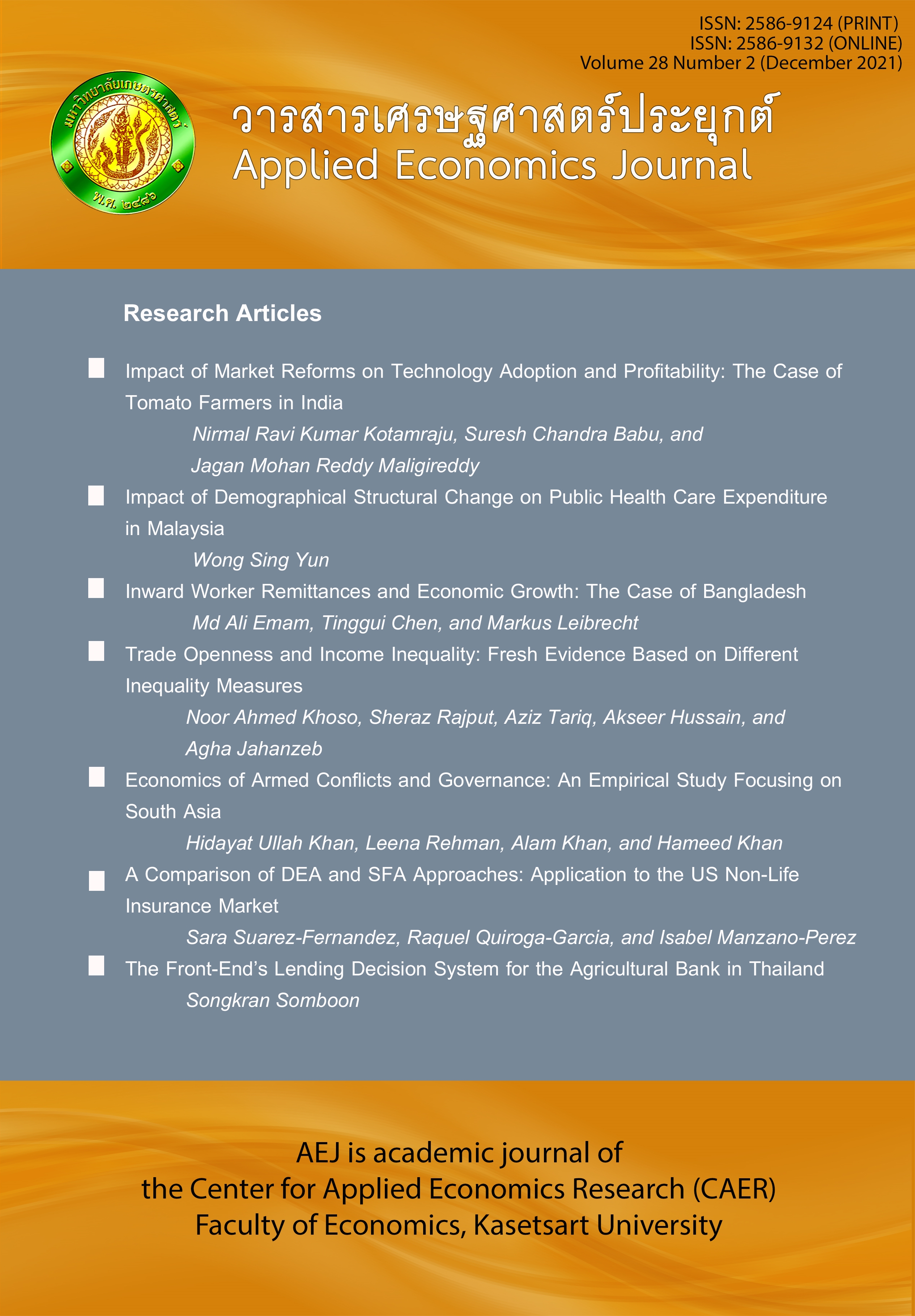Editorial Note
Main Article Content
Abstract
The editorial team is pleased to announce that Applied Economics Journal (AEJ) is back to being listed in the Thai Journal Citation Index (TCI) tier 1 with effect from January 1, 2021, to December 31, 2024. This will also be applicable to the update of the ASEAN Citation Index (ACI) database. The issues relating to referencing styles and the online journal management system, which caused AEJ to fall into TCI tier 2 in 2020, have been improved. Submissions to the journal have also increased and our full archive has shown continuing growth in downloads and citations (see ‘About the Journal’ on our website for details). Our sincere thanks are offered to our authors and our many reviewers for this performance.
In this volume, diverse issues in applied economics are presented which we hope will be beneficial to readers, particularly researchers and relevant policymakers. The first article contributes to the debate on the relationship between direct marketing and farmers’ welfare. Using tomato farmers in India as a case study, its findings show that linking farmers with retail outlets or supermarkets is beneficial for the adoption of modern production technology and profitability. The second paper provides evidence that demographic structure has a significant positive relationship with public health care expenditure in Malaysia while education and health care will be competing for sources of funding in the long run. The third paper shows that worker remittances are important for receiving families but their impact on economic growth needs to be enhanced by incentivizing a more growth-conducive use of remitted funds. The fourth paper investigates the relationship between trade openness and income inequality using different measures of inequality. The cross-country analysis shows that trade openness reduces income inequality regardless of the measures. The fifth article provides empirical evidence that good governance can reduce the likelihood of armed conflict in South Asia, while population and remittances can fuel it. The sixth article compares the two most famous efficiency measurement methods, DEA versus SFA, using the US non-life insurance market as a case study. It concludes that the two approaches yield similar results and can be used complementarily. The last paper develops the front-end’s lending decision system, which can be used as an instrument to support the implementation of appropriate credit policies for the agricultural bank in Thailand.
Article Details
The paper is published under CC BY-NC-ND, in which the article is freely downloaded and shared in its original form non-commercially and its citation details are identified.


